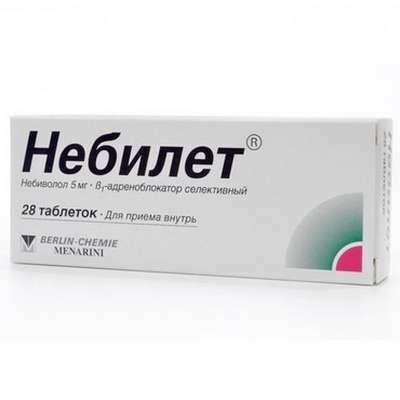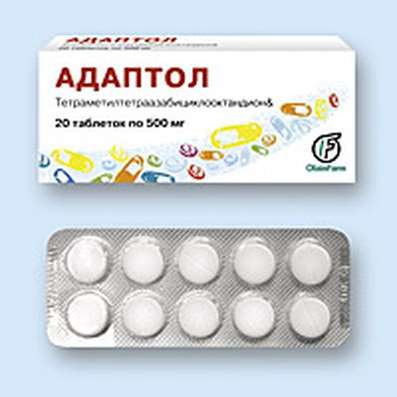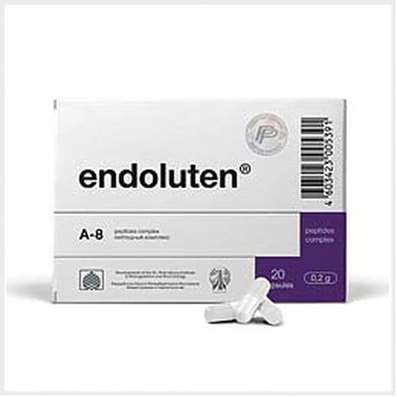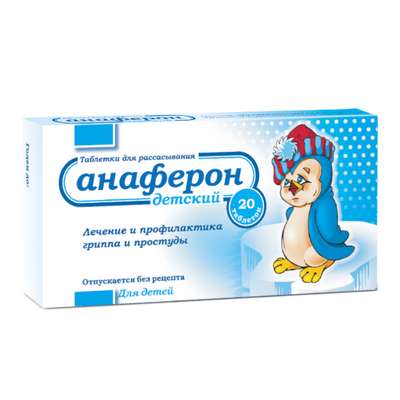Instruction for use: OKI
I want this, give me price
Active substance Ketoprofen
ATX code M01AE03 Ketoprofen
Pharmacological group
NSAIDs - Propionic acid derivatives
Nosological classification (ICD-10)
H60.9 External otitis, unspecified
Inflammation of external auditory canal, Otitis, Chronic external otitis media
H66.9 Otitis media, unspecified
Chronic otitis, Otitis, otitis media, middle ear infections, Otitis media in children
M06.9 Other specified rheumatoid arthritis
Rheumatoid arthritis,Pain syndrome in rheumatic diseases, Pain in rheumatoid arthritis, Inflammation in rheumatoid arthritis, Degenerative forms of rheumatoid arthritis, Children's rheumatoid arthritis, Exacerbation of rheumatoid arthritis, Acute articular rheumatism, Rheumatic arthritis, Rheumatic polyarthritis, Rheumatoid arthritis, Rheumatic polyarthritis, Rheumatoid arthritis, Rheumatoid arthritis of active course, Rheumatoid arthritis, Rheumatoid polyarthritis, Acute rheumatoid arthritis, Acute rheumatism
M10.9 Gout, unspecified
Arthritis Gouty, Acute gouty arthritis, Acute attack of gout, Gouty Arthritis, Articular syndrome with exacerbation of gout, Articular syndrome with gout, Urarturia, Chronic arthritic arthritis, Acute gout, Salt diathesis
M13.9 Arthritis, unspecified
Arthritis,Purulent arthritis (non-infectious), acute Arthritis,Pain in acute inflammatory diseases of the musculoskeletal system,Pain in chronic inflammatory diseases of the musculoskeletal system,The pain in osteoarthritis, Inflammation in osteoarthritis, Inflammatory arthropathy, Inflammatory and degenerative joint diseases, Inflammatory disease of the musculoskeletal system, Inflammatory joint disease, Inflammatory diseases of the musculoskeletal system, destructive arthritis, The disease of the musculoskeletal system, Diseases of the musculoskeletal system, Diseases of the musculoskeletal system and connective tissue, Infections musculoskeletal system, monoartrit, Non-infectious arthritis, rheumatic arthritis, Osteoarthritis, Acute inflammation of the musculoskeletal tissue, Acute inflammatory diseases of the musculoskeletal system, Acute inflammatory condition of the musculoskeletal system, Acute arthritis, Acute osteoarthritis, Post-traumatic osteoarthritis, Reactive arthritis, Chronic inflammatory diseases of the joints, Chronic arthritis, Chronic inflammatory arthritis, Chronic inflammation of the inner layer of the joint capsule, Chronic inflammation of the joint capsule,Chronic inflammatory disease of the joints, Exudative arthritis
M19.9 Arthrosis, unspecified
Change in brush with osteoarthritis, Osteoarthritis, Osteoarthrosis, Arthrosis of large joints, Pain syndrome in osteoarthritis, Pain syndrome in acute inflammatory diseases of the musculoskeletal system, Pain syndrome in chronic inflammatory diseases of the musculoskeletal system, Deforming arthrosis, Deforming osteoarthritis, Deforming osteoarthritis of joints, Osteoarthritis in the acute stage, Osteoarthritis of large joints, Acute pain syndrome with osteoarthritis, Post-traumatic osteoarthritis, Rheumatic osteoarthritis, Spondylarthrosis, Chronic osteoarthritis
M25.5 Pain in the joint
Arthralgia, Pain syndrome in musculo-articular diseases, Pain syndrome in osteoarthritis, Pain syndrome in osteoarthritis, Pain syndrome in acute inflammatory diseases of the musculoskeletal system, Pain syndrome in chronic inflammatory diseases of the musculoskeletal system, Pain in the joints, Soreness of the joints, Soreness of joints in severe physical exertion, Painful inflammatory joint damage, Painful conditions of the musculoskeletal system, Painful joint conditions, Painful traumatic affection of joints, Pain in the musculoskeletal system, Pain in Shoulder Joints, Pain in the joints, Joint pain, Joint pain with injuries, Musculoskeletal pain, Pain with osteoarthritis, Pain in the pathology of the joints, Pain in rheumatoid arthritis, Pain in chronic degenerative bone diseases, Pain in chronic degenerative joint diseases, Bone-joint pain, Joint pain, Arthritic pain of rheumatic origin, Articular pain syndrome, Joint pain, Rheumatic pain, Rheumatic pains
M47.9 Spondylosis, unspecified
Deforming spondylosis, Diseases of the spine, Spondyloarthritis, Seronegative spondylitis, Spondylarthrosis
R50.0 Fever with chills
High fever, Heat, Chills, elevated temperature, hyperthermia, Prolonged fever, Feverish syndrome, Fervescence, Increased body temperature in infectious and inflammatory diseases, fever Symptoms, febrile syndrome, Febrile state, Fever, Fever in infectious and inflammatory diseases, Fever with SARS, Fever with cold, Fever for colds, febrility, Feverish condition with flu, Feverish state in infectious and inflammatory diseases , Feverish state of infectious diseases and in the postoperative period, Feverish condition for colds, Febrile of different genesis, Feverish syndrome on the background of infectious diseases, Feverish syndrome in infectious and inflammatory diseases, Feverish syndrome with colds, Feverish syndrome of different genesis, Increased temperature for colds, Increased temperature at catarrhal and infectious and inflammatory diseases, Increased body temperature in cold, etc., Increased body temperature in cold and other infectious and inflammatory diseases, Increased body temperature in cold and other infectious and inflammatory diseases, Fever during pregnancy, Fever with thrombocytopenia, Febrile reaction in blood transfusion
R52.0 Acute pain
Acute pain syndrome, Acute pain syndrome with osteoarthritis, Acute pain syndrome of traumatic origin, Severe pain of a neurogenic nature, Severe pain, Pain syndrome at delivery
R52.9 Unspecified Pain
Pain after cholecystectomy, Pain shooting, Non-malignant pain, Obstetric and gynecological pain, Pain syndrome, Pain in the postoperative period, Pain in the postoperative period after orthopedic surgery, Pain of inflammatory genesis, Pain than cancer genesis, Pain syndrome after diagnostic procedures, Pain after surgery Diagnostic, Pain after surgery, Pain after orthopedic surgery, Pain after injuries, Pain after the removal of hemorrhoids, Pain at the non-rheumatic inflammation of nature, Pain in inflammatory lesions of the peripheral nervous system, Pain in diabetic neuropathy, Pain in acute inflammatory diseases of the musculoskeletal system, Pain when the tendon pathology, Pain smooth muscle spasm, Pain spasm of smooth muscles (renal and biliary colic, intestinal spasms, dysmenorrhea), Pain spasm of smooth muscles of internal organs, Pain spasm of smooth muscles of internal organs (kidney and biliary colic, intestinal spasms, dysmenorrhea), Pain in trauma syndrome, Pain with injuries and after surgical interventions, Pain in chronic inflammatory diseases of the musculoskeletal system, Pain with duodenal ulcer, Pain syndrome in gastric ulcer, Pain syndrome in gastric ulcer and duodenal ulcer, pain, Pain during menstruation, pain syndromes, painful condition, Painful foot fatigue, Sore gums when wearing dentures, Soreness of the cranial nerves exit points, Painful menstrual irregularities, Painful dressings, Painful muscle spasm, Painful teeth growth, Melosalgia, Pain in the area of the surgical wound, Pain in the postoperative period, Pain in the body, Pain after diagnostic procedures, Pain after orthopedic surgery, Pain after surgery, The pains of the flu, Pain in diabetic polyneuropathy, Pain for burns, Pain during sexual intercourse, Pain during diagnostic procedures, Pain during therapeutic procedures, for colds Pain, Pain in sinusitis, Pain in trauma, Pain traumatic, The pain in the postoperative period, Pain after diagnostic procedures, The pain after sclerotherapy, Pain after surgery, postoperative Pain, Pain postoperative and posttraumatic, posttraumatic pain, Pain when swallowing, Pain in infectious and inflammatory diseases of the upper respiratory tract, The pain of burns, The pain in traumatic muscle injury, Pain in trauma, The pain of tooth extraction, The pain of traumatic origin, Pain caused by spasm of smooth muscles, Expressed pain syndrome, Expressed pain syndrome, traumatic origin, Postoperative pain, Post-traumatic pain, Post-traumatic pain syndrome, Torpid pain, Traumatic pain, Traumatic pain, Mild pain, Moderately severe pain, Moderate pain, Polyarthralgia with polymyositis
T88.9 Complication of surgical and medical care, unspecified
Pain in the postoperative period, Pain in the postoperative period after orthopedic surgery, Pain syndrome after diagnostic procedures, Pain after surgery Diagnostic, Pain after surgery, Pain after orthopedic surgery, Pain after the removal of hemorrhoids, Pain in the application of excimer laser, Pain with injuries and after surgical interventions, Pain syndromes in the dental practice, Painful diagnostic intervention, Painful diagnostic manipulations, Painful instrumental diagnostic procedures, Painful instrumental manipulation, Painful treatments, Painful manipulations, Painful dressings, Painful therapeutic interventions, Pain in the area of the surgical wound, Pain in the postoperative period, Pain after diagnostic procedures, Pain after orthopedic surgery, Pain during diagnostic procedures, Pain during therapeutic procedures, Pain in orthopedics, The pain in the postoperative period, Pain after diagnostic procedures, The pain after sclerotherapy, The pain after dental surgery, postoperative Pain, Pain postoperative and posttraumatic, The pain of tooth extraction, Inflammation after surgery or injury, Inflammation after orthopedic surgery, Inflammation after surgery, The inflammatory syndrome after surgery, Festering postoperative fistula, Operating wound, Complications after tooth extraction
Z100 * CLASS XXII Surgical practice
Abdominal surgery, adenomectomy, Amputation, Coronary angioplasty, Angioplasty of the carotid arteries, Antiseptic skin treatment for wounds, Antiseptic Hand, Appendectomy, atherectomy, Balloon coronary angioplasty, Vaginal hysterectomy, The coronary bypass, Interventions in the vagina and cervix, Interventions on the bladder, Intervention in the mouth, Restoration and reconstructive surgery, Hand hygiene of medical personnel, Gynecologic surgery, Gynecological intervention, Gynecological surgery, Hypovolemic shock during operations, Disinfection of purulent wounds, Disinfection of wounds edges, Diagnostic intervention, Diagnostic procedures, Cervical Diathermocoagulation, Long-surgery, Replacing the fistula catheters, Infection in orthopedic surgery, Artificial heart valve, cystectomy, Short-term outpatient surgery, Short-term operation, Short surgical procedures, Krikotireotomiya, Blood loss during surgery, Bleeding during surgery and in the postoperative period, Kuldotsentez, laser photocoagulation, laser coagulation, retinal laser coagulation, Laparoscopy, Laparoscopy in Gynecology, CSF fistula, Small gynecological operations, Small surgical procedures, Mastectomy and subsequent plastic, mediastinotomy, Microsurgical operations on the ear, Mukogingivalnye operation, suturing, Minor surgery, neurosurgical operation, Immobilization of the eyeball in ophthalmic surgery, testectomy, pancreatectomy, Perikardektomiya, The period of rehabilitation after surgery, The period of, convalescence after surgery, Percutaneous transluminal coronary angioplasty, Pleural thoracentesis, Pneumonia postoperative and posttraumatic, Preparation for surgical procedures, Preparation for surgery, Preparation of the surgeon's hands before surgery, Preparation of the colon for surgical procedures, Postoperative aspiration pneumonia in neurosurgical and thoracic surgery, Postoperative nausea, Postoperative bleeding, postoperative granuloma, postoperative shock, The early postoperative period, myocardial revascularization, Radiectomy, gastric Resection, bowel resection, uterine Resection, liver Resection, enterectomy, Resection of part of the stomach, Reocclusion of the operated vessel, Bonding tissues during surgical procedures, Removal of sutures, Condition after eye surgery, Condition after surgery, Condition after surgery in the nasal cavity, Condition after gastrectomy, Status after resection of the small intestine, Condition after tonsillectomy, Condition after removal of the duodenum, Condition after phlebectomy, Vascular surgery, Splenectomy, Sterilization of surgical instruments, Sterilization of surgical instruments, sternotomy, Dental surgery, Dental intervention in periodontal tissues, strumectomy, Tonsillectomy, Thoracic surgery, total gastrectomy, Transdermal intravascular coronary angioplasty, Transurethral resection, Turbinektomiya, Removal of a tooth, cataract surgery, Removal of cysts, tonsillectomy, Removal of fibroids, Removing the mobile primary teeth, Removing polyps, Removing broken tooth, Removal of the uterus body, Removal of sutures, Urethrotomy, Fistula likvoroprovodyaschih ways, Frontoetmoidogaymorotomiya, Surgical infection, Surgical treatment of chronic limb ulcersm, Surgery, The surgery in the anal area, The surgery on the colon, Surgical practice, The surgical procedure, Surgical interventions, Surgery on the gastrointestinal tract, Surgical procedures on the urinary tract, Surgical procedures on the urinary system, Surgical intervention of the genitourinary system, Surgical procedures on the heart, Surgical manipulation, surgery, Surgery on the veins, Surgical intervention, Vascular surgery, Surgical treatment of thrombosis, cholecystectomy, Partial gastric resection, transabdominal hysterectomy, Percutaneous transluminal coronary angioplasty, Percutaneous transluminal angioplasty, Coronary artery bypass, tooth Extirpation, Extirpation of milk teeth, pulpectomy, pulsative cardiopulmonary bypass, tooth Extraction, teeth Extraction, cataract extraction, Electrocoagulation, endourological intervention, episiotomy, Etmoidotomiya, Complications after tooth extraction
Composition and form of release
Granules for solution for oral administration 1 pack. binary
ketoprofen lysine salt 80 mg
auxiliary substances: mannitol - 1700 mg; sodium chloride - 132 mg; colloidal silicon dioxide - 3 mg; ammonium glycerate - 20 mg; PVP - 20 mg; saccharin sodium - 15 mg; Mint flavoring - 30 mg
in two-bag packages from a three-layer material of 2 g (half dose - 1 g - in each volume); in a cardboard box 12 or 20 bags.
Suppositories rectal for children 1 supp.
ketoprofen lysine salt 60 mg
auxiliary substances: semisynthetic glycerides - 1020 mg
in a strip of 5 pcs .; in a pack of cardboard 2 strips.
Suppositories rectal 1 supp.
ketoprofen lysine salt 160 mg
auxiliary substances: semisynthetic glycerides - 1640 mg
in a strip of 5 pcs .; in a pack of cardboard 2 strips.
Topical solution 1 ml
ketoprofen lysine salt 16 mg
auxiliary substances: glycerol - 200 mg; ethanol - 0.05 ml; methyl-p-hydroxybenzoate 1.5 mg; flavoring mint - 3 mg; menthol - 0.7 mg; saccharin sodium - 2 mg; "Verde Chitose" (brilliant green) - 0.16 mg; sodium hydrophosphate - 0.022 g; purified water - 1 ml
in bottles of 150 ml with a dispenser for injection of 2 ml of the preparation and a plastic transparent cover for dilution with a capacity of 100 ml; in a pack of cardboard 1 bottle.
Description of dosage form
Granules for solution for ingestion: from white to pale yellow with a characteristic smell of mint.
Suppositories rectal for children: from white to light yellow in torpedo shape.
Suppositories rectal: from white to light yellow in torpedo shape.
Solution for topical application: transparent, green with a characteristic smell of mint.
pharmachologic effect
Pharmacological action - anti-inflammatory, antipyretic, analgesic.
Pharmacodynamics
Has anti-inflammatory, analgesic and antipyretic effect. Inhibiting COX-1 and -2 inhibits the synthesis of PG. It has anti-bradykinin activity, stabilizes lysosomal membranes, and delays the release of enzymes that promote tissue destruction in chronic inflammation. Reduces the secretion of cytokines, inhibits the activity of neutrophils.
Reduces the morning stiffness and swelling of the joints, increases the volume of movements.
Ketoprofen lysine salt, in contrast to ketoprofen, is a rapidly dissolving molecule with a neutral pH and almost does not irritate the gastrointestinal tract.
Pharmacokinetics
Suction. Assigned inside, ketoprofen is quickly and quite fully absorbed from the digestive tract, its bioavailability is about 80%. Cmax in the plasma when taken orally after 0.5-2 hours, its value directly depends on the dose taken; after rectal administration, Tmax is 45-60 minutes. CSS ketoprofen is achieved 24 hours after the start of its regular intake.
Distribution. Up to 99% of absorbed ketoprofen binds to plasma proteins, mainly with albumin. Vd is 0.1-0.2 l / kg. Easily passes through the histohematological barriers and is distributed in tissues and organs. Ketoprofen penetrates well into the synovial fluid and connective tissues. Although the concentration of ketoprofen in the synovial fluid is somewhat lower than in the plasma, it is more stable (lasts up to 30 hours).
Metabolism. Ketoprofen is mainly metabolized in the liver, where it undergoes glucuronidation to form esters with glucuronic acid.
After using 160 mg of ketoprofen lysine salt in a dosage form, the topical solution in the plasma of ketoprofen is low - less than 400 ng / ml - and therefore insufficient for a pronounced systemic pharmacological effect.
Indications
Granules for solution for oral administration, rectal suppositories for children, rectal suppositories
Adults
Symptomatic treatment of inflammatory processes, accompanied by heat and pain, incl. inflammatory and rheumatic diseases of joints:
rheumatoid arthritis;
spondyloarthritis;
osteoarthritis;
gouty arthritis;
inflammatory damage of the periarticular tissues.
Children (over 6 years)
Short-term symptomatic treatment of painful inflammatory processes under such conditions as:
diseases of the musculoskeletal system;
otitis;
relief of postoperative pain.
Topical solution
Symptomatic treatment of inflammatory diseases of ENT organs and oral cavity:
angina;
laryngitis;
pharyngitis;
tonsillitis;
stomatitis;
gingivitis;
glossitis;
aphthae;
paradontopathy;
chronic paradontosis;
dental manipulation (as an analgesic agent).
Contraindications
Common for all forms
hypersensitivity (including to other NSAIDs);
aspirin asthma.
Common for pellets, rectal suppositories for children, rectal suppositories:
peptic ulcer of the stomach and duodenum (exacerbation)
ulcerative colitis (exacerbation);
Crohn's disease;
diverticulitis;
peptic ulcer;
hemophilia and other bleeding disorders;
chronic renal failure;
children's age to 6 years (for pellets and suppositories rectal for children), for rectal suppositories - up to 18 years;
pregnancy (III trimester);
lactation period.
Carefully:
anemia;
bronchial asthma;
hyperbilirubinemia;
liver failure;
diabetes;
dehydration;
sepsis;
chronic heart failure;
edema;
arterial hypertension;
blood diseases (including leukopenia);
deficiency of glucose-6-phosphate dehydrogenase;
stomatitis.
For rectal granules and suppositories additionally
Carefully:
alcoholism;
tobacco smoking;
alcoholic cirrhosis of the liver;
elderly age;
pregnancy (I, II trimesters).
For topical solution
Carefully:
stomach ulcer and duodenal ulcer (exacerbation);
ulcerative colitis (exacerbation);
Crohn's disease;
diverticulitis;
peptic ulcer;
hemophilia and other bleeding disorders;
chronic renal failure;
children's age (up to 6 years);
pregnancy (III trimester);
lactation period.
pregnancy and lactation
For granules, rectal suppositories and topical solution. Like other NSAIDs, OCI should not be used in the III trimester of pregnancy. The use of the drug in I and II trimester should be carefully monitored by the attending physician. Breastfeeding with the use of the drug should be discontinued.
Side effects
Common for pellets, rectal suppositories for children and rectal suppositories
On the part of the gastrointestinal tract: abdominal pain, diarrhea, duodenitis, erosive and ulcerative gastrointestinal lesions, gastritis, hematomesis, esophagitis, stomatitis, melena.
On the part of the liver: increased bilirubin levels, hepatic enzyme activity, hepatitis, hepatic insufficiency, increase in liver size.
From the nervous system: dizziness, hyperkinesia, tremor, vertigo, mood swings, anxiety, hallucinations, irritability, general malaise.
From the sense organs: conjunctivitis, impaired vision.
On the part of the skin: urticaria, angioedema, erythematous exanthema, pruritus, maculopapular exanthema, increased sweating, exudative erythema multiforme (including Stevens-Johnson syndrome).
From the genitourinary system: painful urination, cystitis, swelling, hematuria, menstrual irregularity.
From the hematopoiesis: leukocytopenia, leukocytosis, lymphangitis, decreased PV, purpura, thrombocytopenia, thrombocytopenic purpura, enlarged spleen, vasculitis.
On the part of the respiratory system: bronchospasm, dyspnoea, sensation of spasm of the larynx, laryngospasm, laryngeal edema, rhinitis.
From the cardiovascular system: hypertension, hypotension, tachycardia, chest pain, syncope, peripheral edema, pallor.
Allergic reactions: anaphylactoid reactions, edema of the oral mucosa, swelling of the pharynx, periorbital edema.
To identify a different undesirable effect not listed in this manual, it is necessary to inform the attending physician. If there are side effects from the intestine, the drug in the form of granules should be used during meals or with milk.
For rectal suppositories for children and rectal suppositories
Local reactions: burning, itching, heaviness in the anorectal area, exacerbation of hemorrhoids.
For a solution for topical application. Allergic reactions. If the product is swallowed, systemic side effects may develop.
Interaction
For granules, suppositories rectal for children, suppositories rectal. Inducers of microsomal oxidation in the liver (phenytoin, ethanol, barbiturates, flumecinol, rifampicin, phenylbutazone, tricyclic antidepressants) increase the production of hydroxylated active metabolites.
Reduces the effectiveness of uricosuric drugs, enhances the effect of anticoagulants, antiaggregants, fibrinolytics, ethanol, side effects of mineral corticosteroids, GCS, estrogens. Reduces the effectiveness of antihypertensive and diuretics.
Joint reception with other NSAIDs, GCS, ethanol, corticotropin can lead to the formation of ulcers and the development of gastrointestinal bleeding, an increased risk of kidney dysfunction.
Simultaneous administration with oral anticoagulants, heparin, thrombolytic agents, antiaggregants, cefapazone, cefamandole and cefotetan increases the risk of bleeding.
Increases hypoglycemic action of insulin and oral hypoglycemic drugs (dose recalculation is necessary).
Co-administration with sodium valproate causes disruption of platelet aggregation. Increases the concentration in the plasma of verapamil and nifedipine, lithium preparations, methotrexate. Antacids and colestyramine reduce absorption.
For a solution for topical application. There were no interactions.
Dosing and Administration
Rectally, inside, topically.
Inside. Adults - the contents of 1 double-bag (a full dose) dissolved in half a glass of drinking water and taken orally 3 times a day during meals. To obtain one complete dose (80 mg), open a double sachet along the line labeled "full dose".
Elderly patients the dose is determined by the doctor (it is desirable to reduce the dosage by 2 times).
Children 6-14 years: the contents of 1/2 bicompartmental sachet (half the dose) dissolved in half a glass of drinking water and taken orally 3 times a day during meals. To get half the dose (40 mg), open a double bag along the line labeled "half the dose"; for children 14-18 years of age, the dosage of the drug corresponds to that of adults
Rectally. Children 6-12 years (body weight more than 30 kg) - 1 suppository of OCI 60 mg 1-2 times a day; over 12 years - up to 3 times a day. The daily dose is not more than 5 mg / kg. Do not use for more than 5 days without consulting a doctor.
Dosages used to treat children are not effective enough in the treatment of adults.
Adults - 1 suppository 2-3 times a day. The maximum daily dose is 480 mg. In elderly patients, no more than 2 suppositories per day should be used ..
Locally. 2 rinses per day for 10 ml of OKI solution (5 injections) per 1 dose. A solution of 5 injections should be diluted in a glass, attached to the package, half filled with drinking water. When you click on the dispenser-injector, located at the top of the vial, the patient receives 1 injection - 2 ml of OCI solution. Accidental ingestion of the rinse solution does not lead to serious consequences. a single dose for rinsing contains 160 mg of ketoprofen lysine salt, which corresponds to a dose intended for oral administration. Adolescents over 12 years of age should use no more than 3 injections per cup.
Overdose
At present, no cases of overdose with OCI have been reported.
Treatment: in case of an overdose, carry out the treatment established for poisoning with NSAIDs.
special instructions
During treatment, it is necessary to monitor the picture of peripheral blood and the functional state of the liver and kidneys.
If it is necessary to determine 17-ketosteroids, the drug should be discontinued 48 hours before the test.
Reception of ketoprofen can mask signs of an infectious disease.
If the kidney and liver function is impaired, a dose reduction and careful monitoring is necessary. The use of ketoprofen by patients suffering from bronchial asthma can lead to an attack of bronchial asthma.
Women planning a pregnancy, should refrain from taking the drug, tk. can reduce the likelihood of implantation of the egg.
Influence on ability of driving of motor transport and management of mechanisms. During the period of application of the drug, one should refrain from potentially dangerous activities related to the need for concentration of attention and rapid psychomotor reactions.
Solution for topical application. Long-term use of external drugs can lead to sensitization. In this case, the drug should be discontinued and appropriate treatment methods should be selected.
Instructions for preparing a solution. Put the sprayer in the functional position by turning the "nose" towards the inscription "open", injecting into the attached plastic cup by pressing the sprayer until it stops (the injections are repeated until the prescribed dose is reached), dissolve the injected dose in 100 ml of drinking water (half a plastic cup ).
Conditions of leave from pharmacies
Granules. On prescription.
storage Conditions
At a temperature of no higher than 25 ° C.
Keep out of the reach of children.
Shelf life
solution for topical application 16 mg / ml - 2 years.
suppositories rectal for children 60 mg - 3 years.
suppositories rectal 160 mg - 5 years.
Granules for solution for oral administration 80 mg - 2 years.
Do not use after the expiry date printed on the package.

 Cart
Cart





